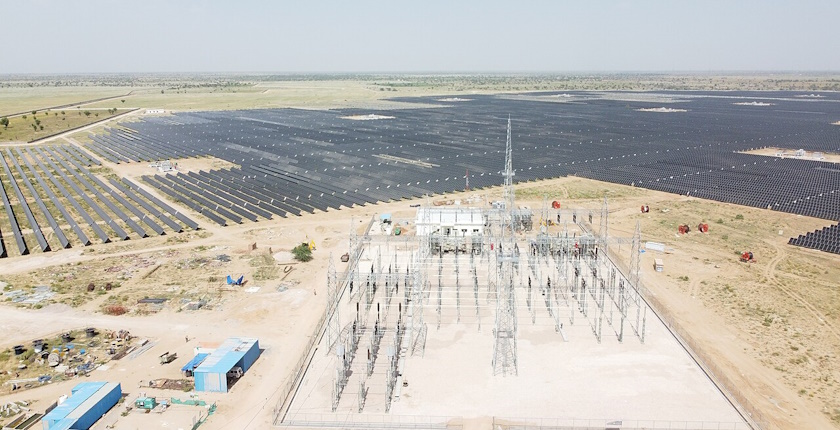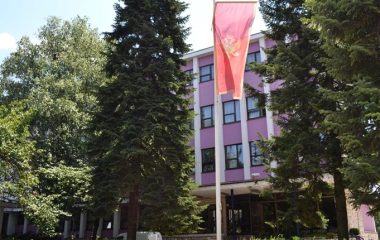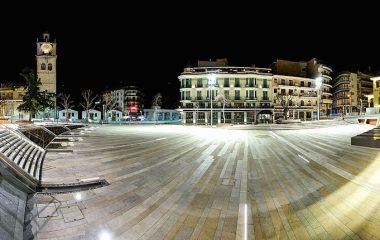
Photo: Sarvajanik Puralekh / https://creativecommons.org/licenses/by-sa/2.0/legalcode.en
The Apriltsi solar power plant is completed and scheduled to connect the remaining sections online by July. The facility in south Bulgaria, the largest in the Balkans and Eastern Europe, consists of bifacial panels with trackers, installed on 2.2-meter high structures.
A photovoltaic system near Plovdiv is visible on satellite images – 834,000 solar panels have been installed as part of the Apriltsi project, Capital.bg reported. The facility in the Pazardzhik municipality in south Bulgaria has 400 MW in peak capacity and features two substations of 150 MW each. They are delivering electricity to the transmission grid, run by the country’s Electricity System Operator or ESO.
Businesswoman Ginka Varbakova’s company Real States built the Apriltsi solar power plant in two years. The location spans more than 800 hectares.
There is 251 MW online, and the remaining sections are under testing. They are scheduled to be commissioned by July. The company doesn’t plan to add batteries for at least another year or two, the news website learned.
Apriltsi is the biggest solar power plant in Eastern Europe as well as in the Balkans. In the entire region that Balkan Green Energy News covers, it only trails Kalyon Energy’s Konya Karapınar facility in central Anatolia, in Turkey’s Asia Minor.
Possibility of agricultural activities under PV panels as well as between rows
Real States didn’t reveal the costs but, according to the article, market prices indicate they can’t be below EUR 200 million. A large part of the financing came through bank loans.
The panels are installed on structures 2.2 meters high, which allows for using the land for agricultural purposes, also known as agrisolar, agrivoltaics or agri PV. Smart trackers move the modules to optimize output in line with software calculations of data from onsite meteorological measurements.
Another key function of the trackers is to place the panels in the safest position, horizontally, during high winds, to prevent damage.
PV panels in Apriltsi have 25.5% efficiency
China-based Anhui Huasun Energy supplied the so-called N-type heterojunction (HJT) PV panels, which are bifacial – they utilize sunlight from both sides. The report notes that their efficiency is 25.5%.
The panels turn east to west instead of being pointed toward the south, so electricity production is higher in the morning and afternoon than at noon, the media outlet wrote. Thus, the solar power plant is less exposed to the daily peaks, when power prices in the market are low, and often even negative.
The arrays are 12 meters apart, so there is no shading issue between them. The company also obtained solutions from Hitachi Energy.









Be the first one to comment on this article.